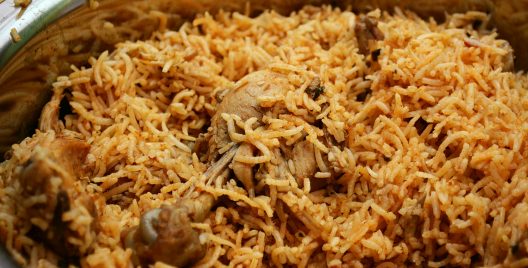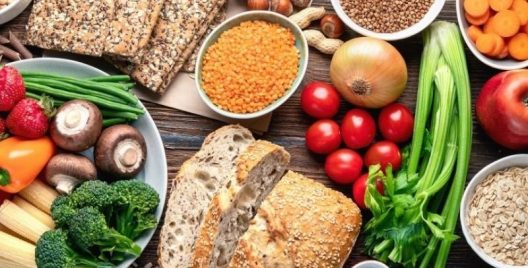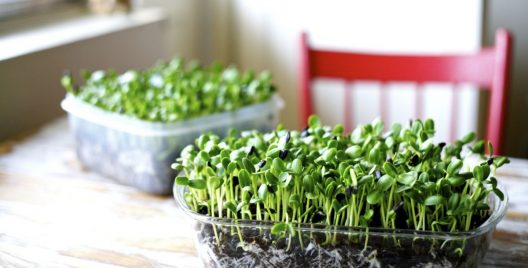If you have been following food gurus or influencers of India on Instagram and other social media, you would know that the food trends for this year (and last year too) includes statements like ‘ordinary vegetables will be the new exotic’ and ‘indigenous grains will be revived’. Buzz words include regional, local, sustainable, heritage and traditional. Fortunately, unlike some of the earlier fads of molecular gastronomy, liquid nitrogen and food drama… these are positive trends about real, good food.
So, my New Year food-related resolution is to eat more local, seasonal and traditional.One of the many people that inspire me is Chef Thomas Zacharias (of the Bombay Canteen in Mumbai which celebrates Indian food and takes it to another level), who has started a movement for local, sustainable food – food that is good for the economy, ecology and the environment. All locally grown fruits and vegetables are sustainable foods. The message is that if we keep eating more imported food, the demand for local vegetables will decrease and we will slowly lose our diversity. This has already started to happen. In the last decade our diets have been limited to 15-20 basic vegetables. Growing the same vegetables and fruits on the same soil (or lack of crop rotation) also results in loss of the nutrient content of the soil, and therefore the farmers have to use fertilizers and pesticides to increase productivity. By eating different types of locally grown fruits and vegetables, farmers will get better returns and reduce their investment in fertilizers. This is a win-win, it’s good for the health of the planet and our own health.
So recently, I went to my neighbourhood vegetable shop and bought myself a basket of all the locally grown vegetables available. Here’s what it contained:
Bottle gourd
Bitter gourd
Snake gourd
Ridge gourd
Ivy gourd/tendli/kovakkai
Drumstick
Parwal/pointed gourd
Raw banana
Banana flower
Banana stem
Sweet potato
Colocasia/taro root/arbi
Malabar cucumber
Elephant yam/suran
Hyacinth Beans/Avarakkai
Bunches of local greens (not spinach)
I read about each of them and their nutrition profile and health benefits are astounding. Here’s a sampler:
Bitter gourd is rich in iron, magnesium, vitamins, fiber, potassium and antioxidants. It is low calorie, helps maintain blood sugar levels, cleanses the liver and boosts metabolism and immunity.
Ridge gourd is extremely rich in dietary fibre and is also enriched with Vitamin C, zinc, iron, riboflavin, magnesium and thiamine. It helps with weight loss and cholesterol and is used in Ayurveda as a treatment for various fungal, viral and bacterial infections.
Bottle gourd is low calorie, high in dietary fiber, multiple vitamins and minerals (similar to ridge gourd) and helps to treat urinary infections, stomach ailments and reduce cholestrol. Bottle gourd juice is cooling and is a great way to start your day or as a post work out drink.
Green banana is high fibre, high starch and high in nutrients like potassium and Vitamin B6, which helps by suppressing the insulin release, thereby stabilizing blood sugar levels. Eat boiled green bananasfor best results.
Banana flowers have a wide range of nutrients but a key benefit is that it boosts progesterone levels and regulates women’s hormone levels, resulting in regular menstrual cycles. They are high fibreand high iron so are excellent for diabetics, heart disease and treatinganaemia.
Banana stem is a rich source of fibre, helps in weight loss and constipation and is also rich in potassium and vitamin B6 just like the fruit. It is a diuretic, helps detoxify the body and is used to prevent and treat kidney stones.
Drumsticks are a superfood, high in calcium and iron. Their anti-inflammatory propertiesand high Vitamin C levels helps relieves respiratory disorders.
Malabar cucumber is mostly water and therefore aids digestion, eliminates toxins from the body, reduces cholesterol, promotes hair growth, helps with weight loss and eye care.It is an excellent source of potassium, calcium, protein, and vitamins C and K.
Elephant yam (suran) is good for the digestive system, being high fibreand helps in weight loss. It also helps reduce LDL (the bad cholesterol), hasanti-ageing properties and helps maintain hormonal balance in women.
Snake gourd helps in detoxifying the body, improving digestion, increasing hydration, strengthening the immune system, managing diabetes, improving hair quality, and aiding in weight loss.
These vegetables are indeed a powerhouse of nutrition and potential good health. So, let’s ponder for a minute and consider this. How many of these local, traditional vegetables do we actually use in our daily cooking? If we live in the South of India, the answer probably is several of these, since they are easily available and part of our traditional diets. The second question is, are our kids eating these vegetables too, in reasonably good portions? How do we get our kids to eat sustainable?The answer is to give them food that is healthy but tasty, interesting and fun.Here’s a baked version of a classic Sindhi recipe using arbi/colocasia that is easy, chatpata-tasty and guilt-free.
About The Writer: Sharmila Riberio is an agriculture economist and mother of 3 ever-hungry boys. She is the author of an award-winning family cookbook – Everyday Love – A Mother’s Guide to Healthy Cooking for Kids.














